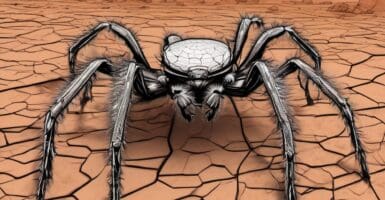Gene Modification Used To Extend Mice Lifespans By 20 Percent
This article is more than 2 years old
 When I watched Don Bluth’s adaptation of Robert C. O’Brien’s The Secret of NIMH when I was a kid, my subconscious vision of the future involved a lot of genetically modified mice running around, hoarding intelligence in their little mice brains. But while science hasn’t necessarily turned rodents into geniuses yet, they have cloned them using limited means — quite quite a few times, actually — and now researchers at the National Institute of Health’s (NIH) National Heart, Lung, and Blood Institute (NHLBI) have
When I watched Don Bluth’s adaptation of Robert C. O’Brien’s The Secret of NIMH when I was a kid, my subconscious vision of the future involved a lot of genetically modified mice running around, hoarding intelligence in their little mice brains. But while science hasn’t necessarily turned rodents into geniuses yet, they have cloned them using limited means — quite quite a few times, actually — and now researchers at the National Institute of Health’s (NIH) National Heart, Lung, and Blood Institute (NHLBI) have
manipulated a single gene in order to extend the mouse’s lifespan by 20 percent. The study appears in a recent edition of the journal Cell Reports, and includes some additional work done by intramural researchers at the National Cancer Institute, the National Institute of Diabetes and Digestive and Kidney Diseases, and the National Institute on Aging.
The research team, led by Toren Finkel M.D., Ph.D., from the NHLBI, focused the efforts on a gene called mTOR, one that is key in balancing metabolism and energy, and which may also be related to the increased lifespan associated with reducing caloric intake. The scientists altered some mice genes so that only 25 percent of the usual mTOR protein was produced, which is around the baseline for survival. The test mice were, on average, smaller than normal, but that was the only difference.
While normal male and female mice live around 22.9 months and 26.5 months respectively, the engineered guys and girls were living 28 months and 31.5 months, respectively. (There was no report on whether the elder mice blew their retirement funds on a Cadillac and a beach house in Florida.)
But while this is generally a remarkable achievement, it also shines a light on one of the problems involved in extending a living organism’s lifespan. Not all of the mice organs were affected in the same way. The engineered mice were found to have better memory and balance as they aged, and performed more satisfactorily than control mice in mazes and balance tests. Also, their muscle strength and posture remained above average. However, they experienced bone deterioration at a more rapid rate than the control mice and were at risk for infections as they aged, which speaks to a weakened immunity.
“While the high extension in lifespan is noteworthy, this study reinforces an important facet of aging; it is not uniform,” said Finkel. “Rather, similar to circadian rhythms, an animal might have several organ-specific aging clocks that generally work together to govern the aging of the whole organism.”
If the same results were to occur in humans, our average lifespans would be lengthened by 16 years, from 79 to 95. But I seriously doubt this research will be used to that effect. Instead, Finkel is interested in seeing how these results can further be applied to age-related diseases that affect specific organs, such as Alzheimer’s.
When it comes to studying diseases, old mice sound less dangerous than growing tiny brains in dishes, but tiny brains won’t burrow through a pantry wall in order to get to the peanut butter.












